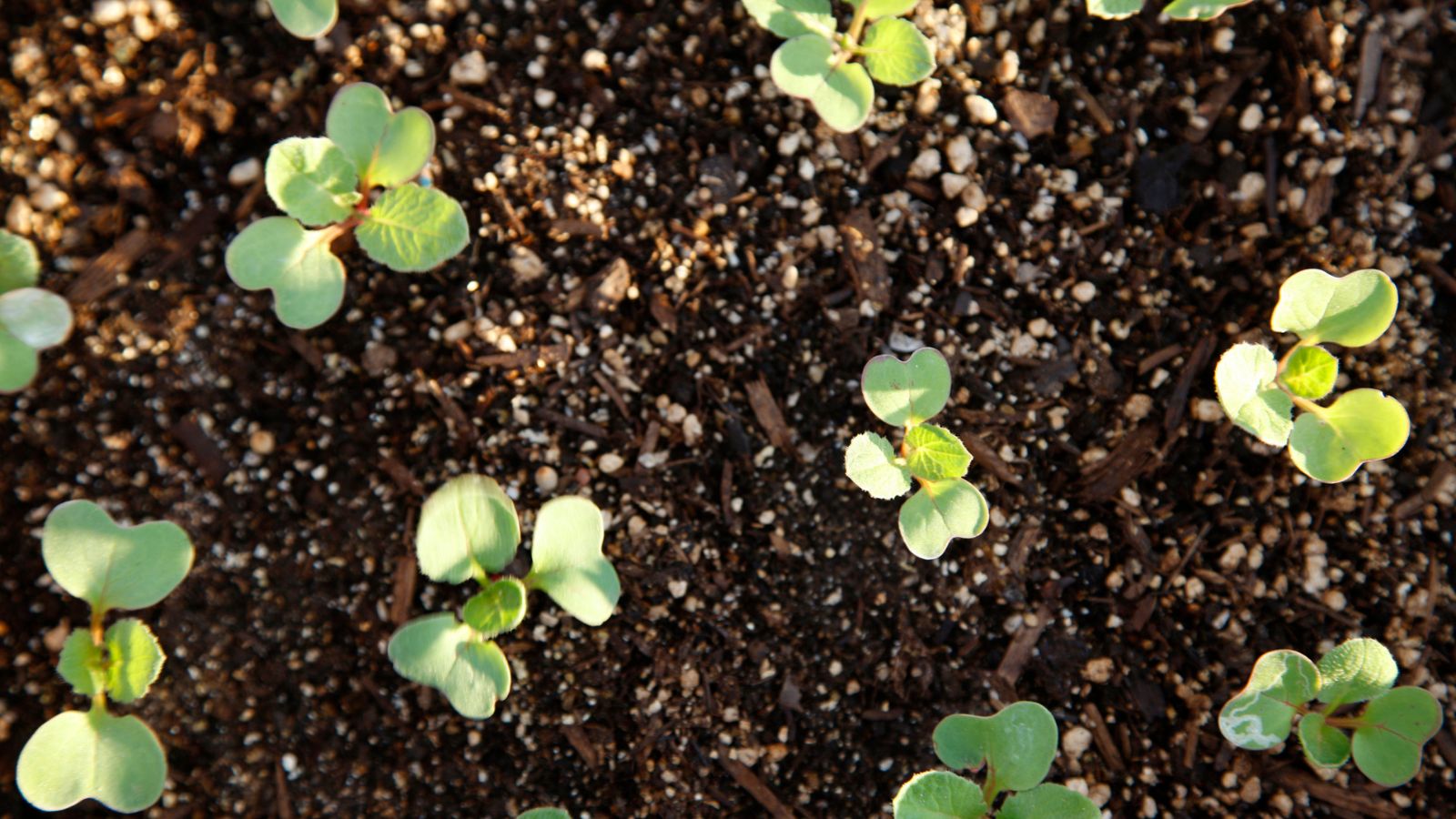What is vermiculite? Our experts advise on how to use it in spring to boost your plants
Knowledgeable gardeners add vermiculite to soil – but what is it, what does it do, and how does it work best? Discover here


In spring, for most of us, there's a renewed interest in gardening – though, granted, it's a year round obsession for others of us. One ingredient the green thumbed among us often use to boost their plants' health and growth is vermiculite. But what is vermiculite, what does it do, should you be using it, and how can you best harness its power?
Crucial to soil health, vermiculite is a mineral mined in the US. It comes in bags and has the appearance of a light brown, flaky cereal.
The main benefit of vermiculite is that it can both hold on to water, and attract some nutrients beneficial to plants. Another is that it can be used as an alternative to peat.
There are different ways to use vermiculite for improved plant growth and health. Below, our experts explain when they use it, and how.
Why use vermiculite in gardening?
'I use vermiculite, a lightweight mineral, to boost water and nutrition retention and to help aerate roots. It can be used as a compost substitute, or mixed with compost to cover seeds,' says garden expert Ruth Hayes.

Ruth Hayes is the gardening editor of Amateur Gardening magazine. She has a qualification from the Royal Horticultural Society. Her work for Homes & Gardens and Amateur Gardening, the world's oldest weekly gardening publication, involves matching gardening tasks with each season, covering everything from sowing and planting, to pruning, taking cuttings, dealing with pests and diseases and keeping houseplants healthy. She also spends time testing many of the new products that arrive on the gardening market.
How and where to use vermiculite

For aeration
'Vermiculite can come in different grades, from very small grades ideal for sitting on the top of trays when starting seeds to larger grades that are perfect for improving aeration when used in pots and containers,' says Drew Swainston, Homes & Gardens' garden expert.
Design expertise in your inbox – from inspiring decorating ideas and beautiful celebrity homes to practical gardening advice and shopping round-ups.
For water retention
'Vermiculite is very effective at holding onto water, which makes it ideal for keeping freshly-sown seeds moist,' says Holly Crossley, Homes & Gardens' Senior Content Editor (Gardens). 'You can either mix it into your seed-starting compost at a 50:50 ratio, or cover your seeds with a thin layer of the material.'
'Vermiculite can help with container gardening as the addition of the material to the soil mix will boost its water-holding capability as well help with improving the drainage and aeration,' says Drew Swainston.
For light circulation
'Once seeds are sown and lightly watered, cover them according to the packet instructions as some need more light than others to germinate. You can use compost, vermiculite or a mix of the two. Vermiculite is a natural compound that helps light, air and water circulate around the seeds, seedlings and developing roots,' advises Ruth Hayes.
As a peat alternative
This is more unusual, but a reader contacted the team at our sister title Amateur Gardening and told them: 'For the last 50 years, I have used horticultural vermiculite as an alternative to peat. It comes in four different grades. I use very fine for germinating seeds and slightly bigger flakes for sowing seedlings. It is sterile, retains moisture so seedlings and plants are kept moist but not waterlogged. I mix it with good soil but it can be used on its own with weak plant food added with the water. It is not expensive and can be used and reused indefinitely. It can be used for root cuttings, the new roots cluster around the vermiculite.'
For indoor plants
If you have continuously thirsty indoor plants, vermiculite is your friend. Mix it half and half with house plant compost to cut down on watering and ensure slow release of water for your plants. Like with soil in the garden, it will improve your house plants' soil aeration, too.

Over the years, Holly has been an allotment keeper, a professional gardener, and a botanical illustrator. Having worked for Gardeningetc.com for two years, she now writes about plants and outdoor living for Homes & Gardens. Holly has a particular interest in houseplants (of which she has an ever-growing collection), garden design, and the benefits of gardening for mental health.

Drew is a former professional gardener who has worked in historic gardens for the National Trust in the UK and also as a specialist grower in kitchen gardens, growing vegetables and fruit for chefs. He has also had an allotment which was maintained using no-dig methods.
Where to buy vermiculite
Vermiculite is available for sale in bags from garden centers and online. These links go straight to the best products.
- Buy vermiculite at Amazon
- Buy organic vermiculite at Burpee
- Buy vermiculite at Home Depot
- Buy vermiculite at Walmart
FAQs
Are vermiculite and perlite the same?
No, perlite and vermiculite are not the same. Perlite is the white granules you'll see added to soil and is mostly used for aeration, particularly for indoor plants or seedlings. It's made from volcanic rock. Vermiculite is a mineral that is mostly used for water retention in soil. If you have a plant that needs really good aeration and water retention, you can mix both into your compost.
Is vermiculite eco-friendly?
No, vermiculite is not seen as being eco-friendly because it is not renewable.
It's important to acknowledge that vermiculite isn't a smoking gun: use it too liberally and you might find that your plants receive too much water and that the soil becomes boggy, or that the soil becomes infected with bacteria. So, follow instructions when you buy it to ensure your plants benefit from it to the maximum.

Lucy Searle has written about interiors, property and gardens since 1990, working her way around the interiors departments of women's magazines before switching to interiors-only titles in the mid-nineties. She was Associate Editor on Ideal Home, and Launch Editor of 4Homes magazine, before moving into digital in 2007, launching Channel 4's flagship website, Channel4.com/4homes. In 2018, Lucy took on the role of Global Editor in Chief for Realhomes.com, taking the site from a small magazine add-on to a global success. She was asked to repeat that success at Homes & Gardens, where she has also taken on the editorship of the magazine.
- Holly CrossleyContributing Editor
- Drew SwainstonContent Editor